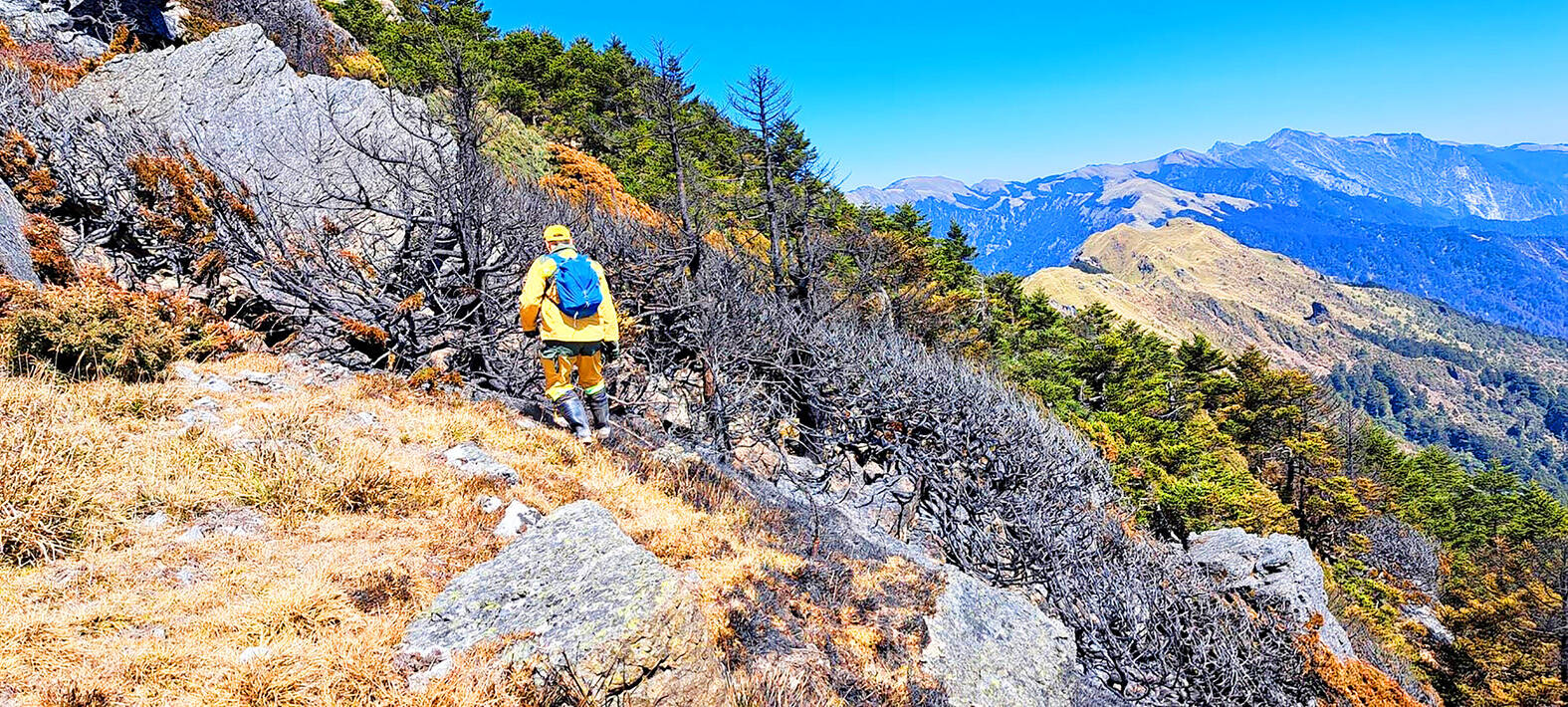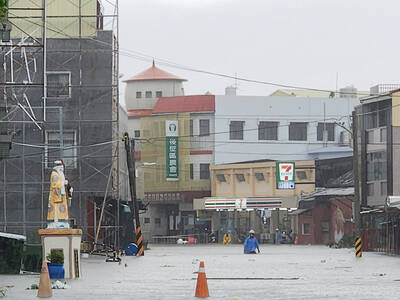Average rainfall recorded by weather stations south of Hsinchu County was the lowest in 60 years, potentially leading to water shortages if plum rains in May and June fall short of expectations, the Central Weather Bureau (CWB) said yesterday.
The weather this winter was marked by wide temperature swings and a paucity of rain in regions other than the north and the windward eastern half of Taiwan proper, Weather Forecast Center Deputy Director Chen Yi-liang (陳怡良) told a quarterly briefing in Taipei.
The weather stations at Sun Moon Lake (日月潭), Alishan (阿里山), Chiayi and Tainan — the oldest of which was established in 1933 — recorded the lowest-ever accumulated rainfall, Chen said.

Photo courtesy of the Hualien District Office via CNA
The average accumulation recorded by the five weather stations in Hsinchu and areas south was 31.4mm, the lowest in the past 60 years, he said.
The low rainfall was second only to the winter of 2018 to 2019, which preceded a historic drought the following year, he said.
In addition, snow did not fall on Yushan (玉山), the nation’s highest peak, this winter for the first time since records began, Chen added.
Average temperatures in Yushan this season passed the seasonal average of 2.9oC to reach 3.03oC, the third-highest in history, he said.
Projections based on dynamic model simulations on the bureau’s supercomputer showed that mild temperatures, but a less-than-average volume of rain, are likely to prevail this spring, due largely to a fading La Nina effect, Chen said.
This means that temperatures are likely to be normal from this month to May, while the second- most likely scenario is for the mercury to rise slightly higher than average levels, Chen said.
Rainfall for this month is projected to range from average to a little below average, and normal for next month and May, he said.
Although no signs of a thunderstorm have been observed, they are still likely to occur, as the weather in spring is wont to rapid changes and weather fronts can take form with little warning in Taiwan, he said.
There is a high chance of fog, especially in the outlying islands that comprise Kinmen County and the southwestern parts of Taiwan proper, Chen said.
The plum rains in May and June might bring respite to water shortages in Taiwan’s central and southern regions, but the bureau would be able to make better predictions after weather fronts and air streams take form, bureau senior meteorologist Wu Wan-hua (伍婉華) said.

Rainfall is expected to become more widespread and persistent across central and southern Taiwan over the next few days, with the effects of the weather patterns becoming most prominent between last night and tomorrow, the Central Weather Administration (CWA) said yesterday. Independent meteorologist Daniel Wu (吳德榮) said that based on the latest forecast models of the combination of a low-pressure system and southwesterly winds, rainfall and flooding are expected to continue in central and southern Taiwan from today to Sunday. The CWA also warned of flash floods, thunder and lightning, and strong gusts in these areas, as well as landslides and fallen

WAITING GAME: The US has so far only offered a ‘best rate tariff,’ which officials assume is about 15 percent, the same as Japan, a person familiar with the matter said Taiwan and the US have completed “technical consultations” regarding tariffs and a finalized rate is expected to be released soon, Executive Yuan spokeswoman Michelle Lee (李慧芝) told a news conference yesterday, as a 90-day pause on US President Donald Trump’s “reciprocal” tariffs is set to expire today. The two countries have reached a “certain degree of consensus” on issues such as tariffs, nontariff trade barriers, trade facilitation, supply chain resilience and economic security, Lee said. They also discussed opportunities for cooperation, investment and procurement, she said. A joint statement is still being negotiated and would be released once the US government has made

SOUTH CHINA SEA? The Philippine president spoke of adding more classrooms and power plants, while skipping tensions with China over disputed areas Philippine President Ferdinand Marcos Jr yesterday blasted “useless and crumbling” flood control projects in a state of the nation address that focused on domestic issues after a months-long feud with his vice president. Addressing a joint session of congress after days of rain that left at least 31 dead, Marcos repeated his recent warning that the nation faced a climate change-driven “new normal,” while pledging to investigate publicly funded projects that had failed. “Let’s not pretend, the people know that these projects can breed corruption. Kickbacks ... for the boys,” he said, citing houses that were “swept away” by the floods. “Someone has

‘CRUDE’: The potential countermeasure is in response to South Africa renaming Taiwan’s representative offices and the insistence that it move out of Pretoria Taiwan is considering banning exports of semiconductors to South Africa after the latter unilaterally downgraded and changed the names of Taiwan’s two representative offices, the Ministry of Foreign Affairs (MOFA) said yesterday. On Monday last week, the South African Department of International Relations and Cooperation unilaterally released a statement saying that, as of April 1, the Taipei Liaison Offices in Pretoria and Cape Town had been renamed the “Taipei Commercial Office in Johannesburg” and the “Taipei Commercial Office in Cape Town.” Citing UN General Assembly Resolution 2758, it said that South Africa “recognizes the People’s Republic of China (PRC) as the sole